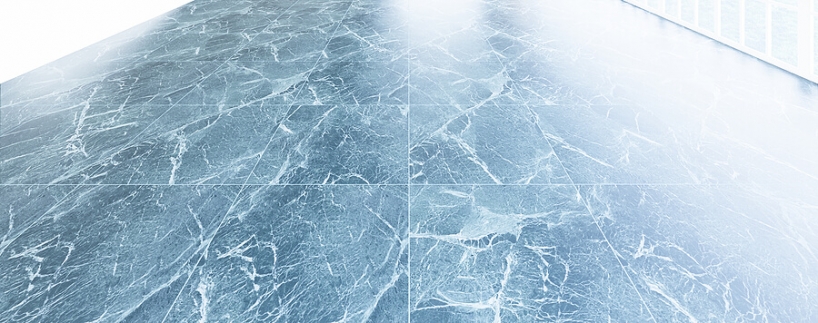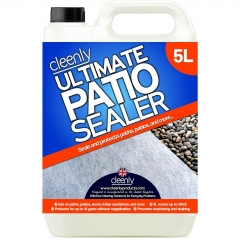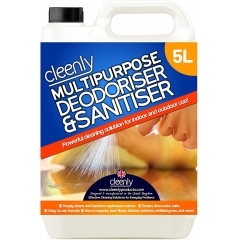
August 13th, 2021 by
15 facts about caring for a stone floor
Caring for a stone floor is easy, right, because it’s a hard surface: just mop with a bucket of bleach and you’re done? Actually no. Stone may be a hard, strong surface but it requires more care than you probably appreciate to keep it looking good and staying clean.
Here are 15 things you need to know about caring for your stone floor:
Stone is porous
The degree to which is it porous varies across the different types but being porous means it can absorb water and other liquids into the fabric of the stone unless protected.
The surface is protected by a sealant
To prevent substances from being absorbed into the stone, and to protect the surface from scratches and marks, a layer of sealant is added, and this determines the kinds of products you can use to clean it.
Cleenly Weatherproof Path and Patio Sealer 5L
Price: £29.99
Buy Now
Particles, such as dirt, can damage the surface of the stone
Dirt and other small particles, such as gravel and stone, can damage the sealant and cause the stone underneath to be exposed. To minimise this, sweep or vacuum regularly (every day is ideal) and don’t wear outdoor shoes in the house. Always sweep or vacuum before cleaning to prevent rubbing particles over the surface of the floor which acts rather like sandpaper.
Protect with rugs
It’s a good idea to protect areas with high foot traffic with non-slip rugs or mats.
Use a pH neutral detergent
Stone can be damaged by cleaning it with detergents that are too acidic or alkaline. Only use products that are pH neutral or state that they are suitable for your type of stone. For example, this detergent is a general steam cleaner product but does confirm that it’s appropriate for Indian sandstone.
Steam cleaners can be used on some stones, but not all
Steam mops are a great way for getting hard surfaces hygienically clean, but the steam can penetrate into some types of stone that are particularly porous. Check with the manufacturer of your floor or cleaner to see whether it’s appropriate for yours.
If using a bucket, keep changing the water
Keep an eye on the water and change when it starts to look dirty. You can’t clean a floor with dirty water and you risk rubbing the particles over, as described in point 3.
Allow the detergent to work on heavy soiling
If the floor is especially dirty, you can apply the detergent mix and leave it to work on the dirt for a few minutes before rinsing off.
Cleenly Multi-Purpose Deodoriser and Cleaner 5L
Price: £17.99
Buy Now
Don’t use anything abrasive
Use soft cleaning mops or pads – microfibre ones are good – to avoid scratching the sealant. Avoid very abrasive tools like scrubbing brushes or scouring pads, even if the floor seems especially dirty.
Pay attention to ‘dirt grabbing’ areas
Many stone surfaces have natural dips and crevices that can harbour dirt, as can grouting lines. Pay close attention to these but don’t scrub (see the previous point). Let the detergent do its work rather than elbow grease.
Always rinse detergent away
Rinse any detergent away with clean water as any residue left can become sticky and attract dirt plus it can damage the surface over time.
Dry the floor after cleaning
It’s important to dry up as much of the moisture after cleaning as you can to minimise the risk of it seeping into the stone in small areas where the sealant may have become scratched or compromised. Squeeze the mop head out thoroughly or change for a dry one.
Don’t replace rugs until completely dry
If you put rugs or mats back down on the floor before it’s completely dry, you risk trapping moisture which can lead to the development of mould or bacteria.
Sealant doesn’t last forever
Sealant will wear away after a time due to foot traffic and repeated cleaning. It will, therefore, need re-sealing at some point (the time will depend on usage and type of stone) but you can easily do this yourself. You should be able to tell when it needs doing as water will absorb into the stone, rather than sitting on the surface. An outdoor patio seal will be suitable for some stones, such as Indian sandstone, or choose something specific to your type of stone.
Always clean before sealing
If it is time to re-seal your stone, always give it a good clean first (there’re no point sealing dirt into it!) and make sure it’s thoroughly dry before applying.
Comments
Leave a reply
Your e-mail address will not be published. All fields are required


